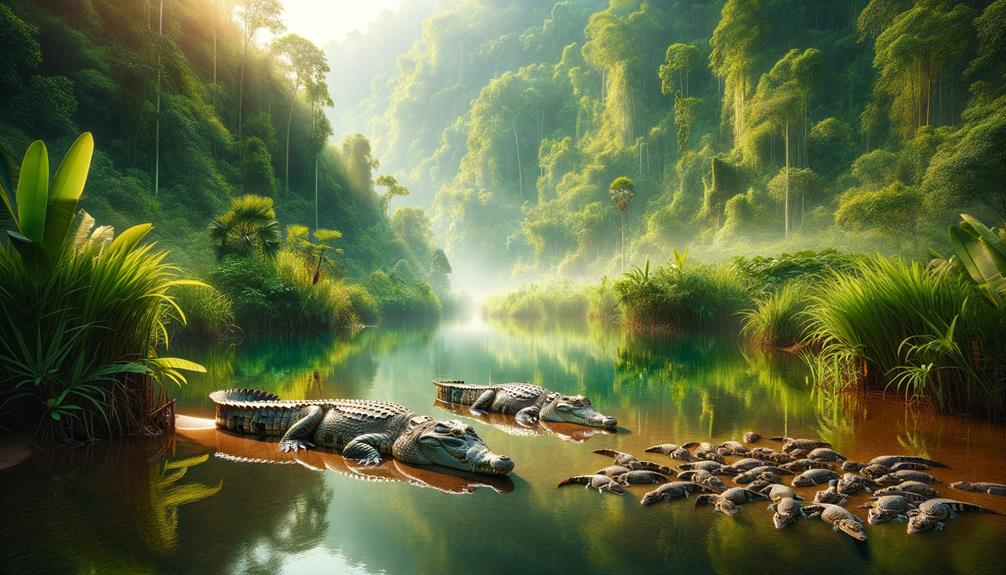I've dedicated my work to understanding the thorough efforts underway to restore New Zealand's iconic tuatara populations. By removing invasive predators and improving habitats, we're working to recreate the ideal conditions for these unique creatures. Monitoring their genetic makeup ensures the preservation of their genetic diversity, which is crucial for their adaptability and survival. Our strategies also involve creating safe havens on the mainland and adapting to the impacts of climate change. Community cooperation is vital to sustaining these efforts. The progress in tuatara restoration demonstrates our commitment to protecting these living fossils. Let's take a closer look at the meticulous efforts necessary for the tuatara's future.
Key Takeaways
Eradicating invasive predators on offshore islands creates safe habitats for tuatara.
Translocating tuatara to restored habitats and predator-free sanctuaries increases their populations.
Enhancing vegetation and habitat conditions on islands like Stephens Island supports tuatara sustainability.
Monitoring genetic diversity and inbreeding levels ensures healthy and adaptable populations.
Community engagement in predator control and habitat restoration supports long-term tuatara conservation.
Conservation Challenges
The conservation challenges facing New Zealand's tuatara are pressing and complex, driven primarily by introduced predators, habitat isolation, and the escalating impacts of climate change. On the mainland, possums, rats, stoats, and even domestic cats have decimated tuatara populations, confining them to a few offshore islands like Stephens Island. However, these isolated populations face the threat of local extinction due to inbreeding, natural disasters, and disease.
The small size of these populations exacerbates the issue, making them vulnerable to genetic bottlenecks and inbreeding depression, which jeopardize their long-term survival. Climate change also poses a significant threat, as rising nest temperatures alter sex ratios, favoring males and imperiling the sustainability of future generations.
Monitoring tuatara populations, such as the one on North Brother Island in the Cook Strait, has shown that the species is a sensitive indicator of climate change impacts on isolated species. To ensure their survival, conservationists must develop strategies that address these interconnected threats. The tuatara's unique 250-million-year evolutionary history underscores the urgency of these conservation efforts.
Habitat Restoration
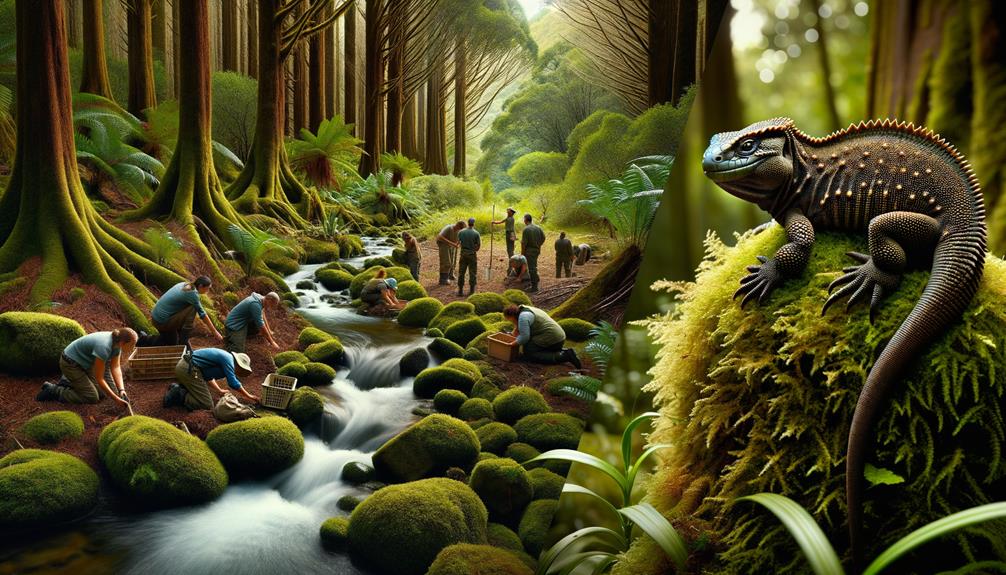
Addressing the multifaceted threats to tuatara survival, our focus now shifts to habitat restoration efforts on Stephens Island. Targeted planting and vegetation enhancement are crucial in creating an ideal environment for these ancient reptiles. By replicating the environmental conditions found on offshore islands, we aim to support the unique biological needs of the tuatara, a species that has endured for over 250 million years.
In our habitat restoration project, we carefully select and plant native plant material to foster a rich, diverse ecosystem. This vegetative enhancement provides essential shelter and resources for the wild populations of tuatara and safeguards the long-term sustainability of their habitat. We have collaborated with various partners to meticulously translocate and reintroduce tuatara from mainland New Zealand to restored habitats.
Maintaining and enhancing the vegetation on Stephens Island is vital for the survival of translocated tuatara populations. This effort is a key component of our broader conservation strategy, aiming to create a thriving environment where tuatara can flourish. By restoring their natural habitat, we take a significant step toward securing the future of these remarkable living fossils.
Predator Control
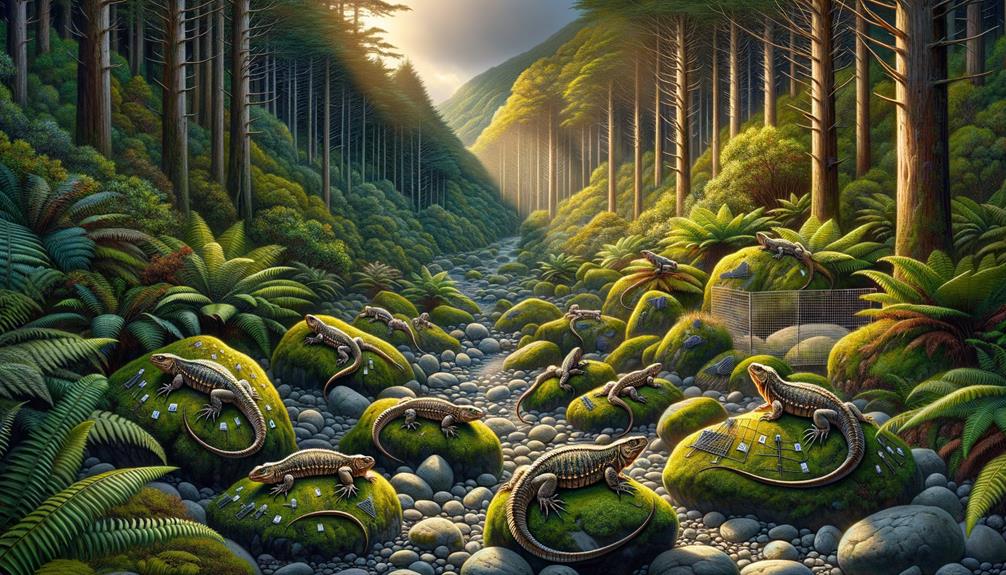
Introduced mammalian predators pose a significant threat to tuatara populations, making rigorous and ongoing predator control measures necessary to ensure their survival. Rats, stoats, and ferrets are particularly devastating to island tuatara, often feeding on eggs and juvenile lizards, which jeopardizes the genetic diversity crucial for robust populations.
Eradication programs have been crucial in restoring the ecological balance on New Zealand's offshore islands. By removing these invasive predators, native species, including the tuatara, have had the opportunity to recover and thrive. Now, continuous monitoring and immediate response to new predator incursions are necessary to maintain these safe havens.
Preventing recolonization is vital. Fencing and other barrier technologies have been effectively used to protect these vulnerable habitats. Community engagement and education play a vital role in sustaining these efforts, as an informed public can help prevent the accidental introduction of predators.
Genetic Monitoring
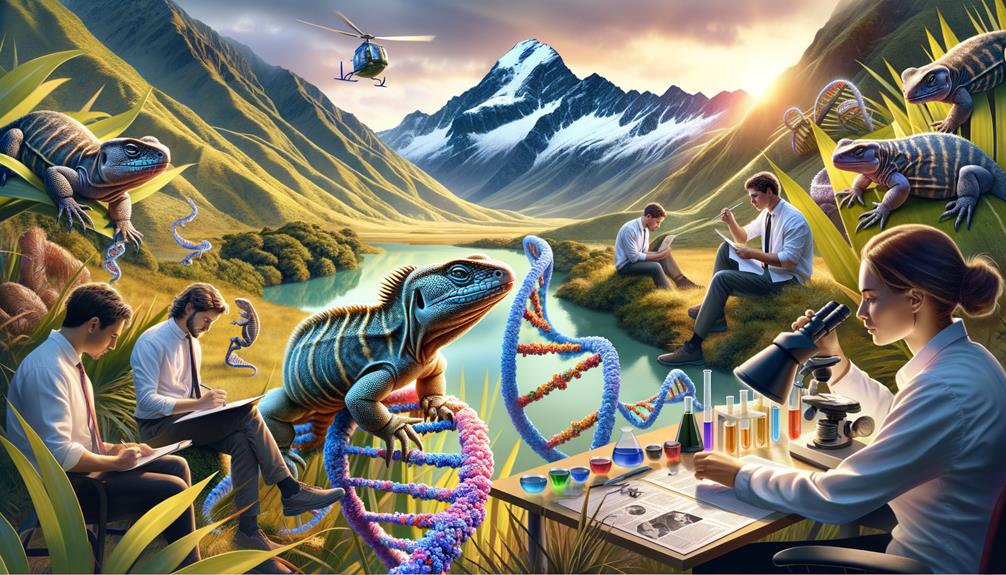
Genetic monitoring plays a vital role in tuatara conservation, offering a deeper understanding of their long-term viability and adaptability. When translocating tuatara, it's crucial to ensure that the individuals represent the full genetic spectrum of their source population. This initial step is vital for maintaining the species' genetic diversity, a key factor in their resilience and ability to adapt.
Through ongoing genetic monitoring, we can track changes in heterozygosity and inbreeding levels, detecting potential genetic erosion in isolated populations. Using advanced genetic tools, such as microsatellite markers and next-generation sequencing, we can analyze tuatara population genetics and parentage in high resolution. This detailed genetic data is essential for informed management decisions.
If genetic data indicates a decline in genetic diversity or an increase in inbreeding, we can supplement populations with new individuals or adjust breeding programs accordingly. By analyzing mitochondrial DNA alongside other genetic markers, we gain a comprehensive view of tuatara population genetic health. This proactive approach ensures we maintain the genetic diversity necessary for the tuatara's ongoing survival and adaptability in their natural habitats.
Future Strategies
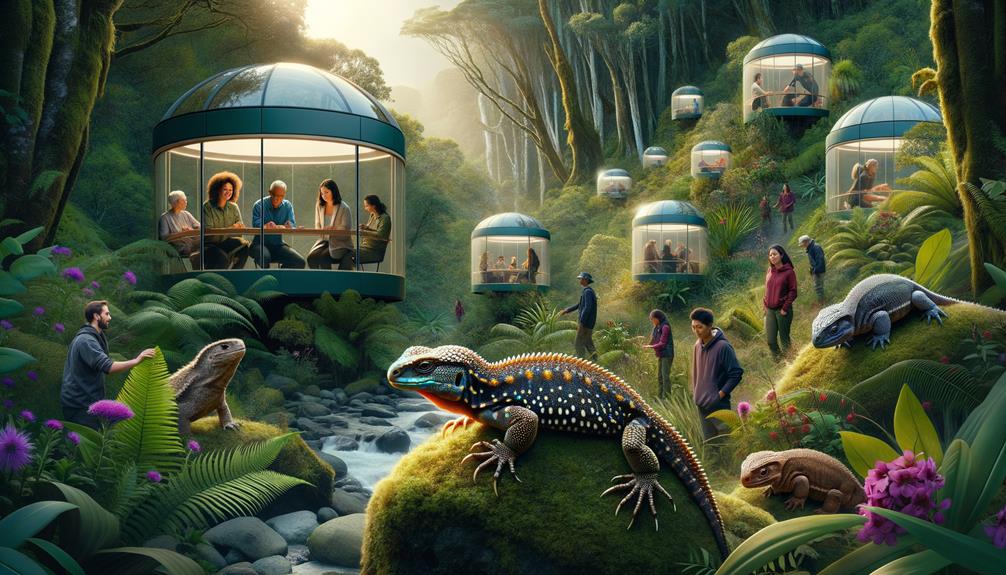
To ensure the long-term success of tuatara restoration, thorough genetic surveys are necessary to identify diverse source populations for reintroduction efforts. This is crucial because current populations of tuatara face low genetic diversity, which has led to their extinction in some areas due to invasive predators and habitat loss. Preserving genetic diversity is not only a biological imperative, but it also acknowledges the species' ancient lineage and resilience.
Fenced mainland sanctuaries offer a promising approach. By creating predator-free environments, we can recreate the historical ecological conditions that allowed tuatara to thrive. Restoring seabird colonies within these sanctuaries can simulate the natural habitats where the tuatara evolved.
Adapting to changing environmental conditions is key to our strategy. As climate change affects temperature-dependent sex determination, we need flexible and responsive approaches to ensure the viability of reintroduced populations.
Public engagement and cooperation are vital. We must work with communities to prevent the spread of invasive predators, ensuring our islands remain safe havens for tuatara. Rigorous monitoring and research programs will guide our efforts, providing the data needed to refine and improve our strategies for the recovery of this remarkable species.
Frequently Asked Questions
Why Did the Tuatara Survive on New Zealand but Not Anywhere Else?
Tuatara found a safe haven in New Zealand, where they managed to survive against all odds. The country's isolation, lack of large predators, and unique environment allowed them to thrive while their relatives disappeared globally.
What Happened to Cause the Tuatara Population to Severely Decline in New Zealand?
The tuatara population in New Zealand experienced a severe decline due to the introduction of Pacific rats by early Polynesian settlers, which led to habitat destruction and the arrival of invasive species like possums, stoats, and cats. These invasive species preyed upon the tuatara, causing environmental stress and further contributing to the decline of the species.
What Is the Status of the Sphenodon?
Imagine a lone sentinel on a remote island – the tuatara is like that, holding on despite adversity. Currently, this ancient reptile is classified as 'At Risk-Relict,' confined to 32 offshore islands due to the presence of invasive predators that threaten its survival.
How Many Tuatara Are Left in Nz?
There are around 60,000 to 100,000 tuatara remaining in New Zealand. The majority of them can be found on Stephens Island, with smaller populations on about 32 offshore islands. Unfortunately, their numbers are being threatened by predators like rats and cats.



